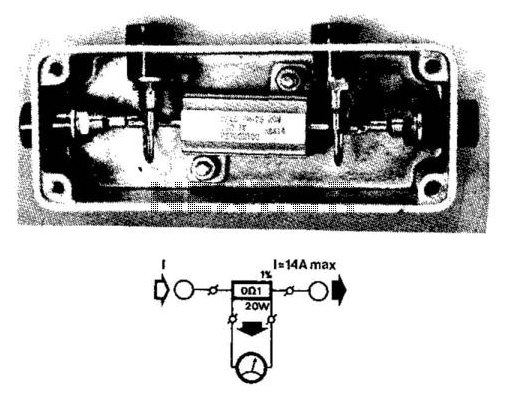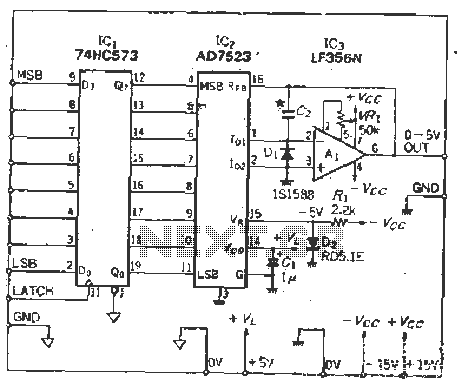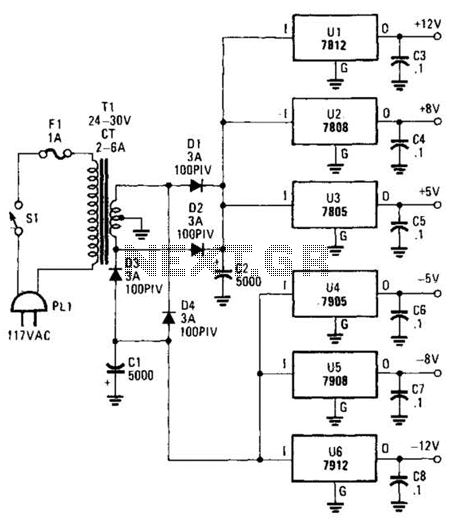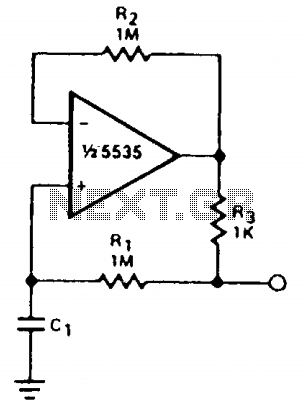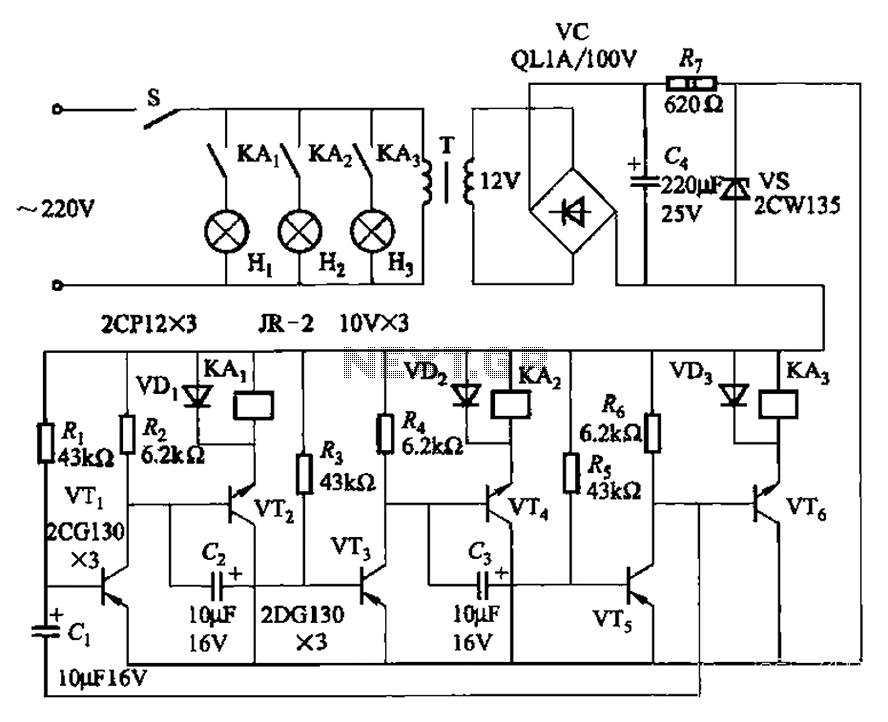
Multi Rocket Launcher
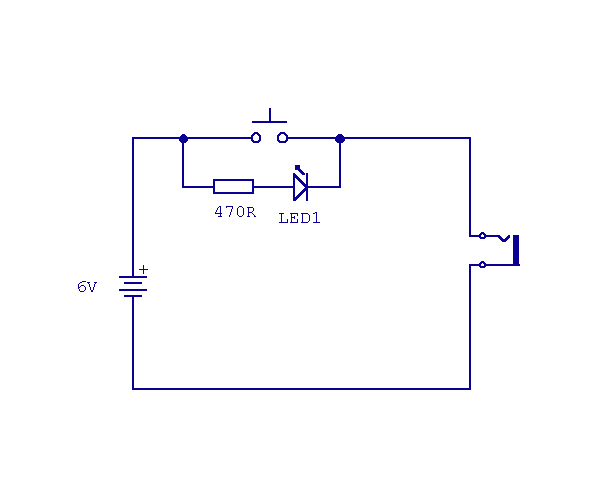
This launch controller can be used with low voltage battery igniters, which fire rocket engines in model rockets such as the Estes range. These circuits are electrical, only switches and contacts are involved. First the circuit for a single rocket. More: A point to note here is that this controller uses "C" cells, providing more current than "AA" batteries and that the push button switch has contacts rated 1 amp or higher. The wire to the igniter is isolated via a 3.5 inch jack plug.
The launch controller described operates as a simple electrical circuit designed for igniting low voltage battery igniters in model rocketry applications. The circuit primarily consists of a power source, a push button switch, and an output connection to the igniter. The use of "C" cell batteries is notable as they provide a higher current capacity compared to "AA" batteries, making them suitable for applications requiring more power, such as igniting rocket engines.
The push button switch is a crucial component, designed to handle a current rating of 1 amp or higher, ensuring reliable operation during the ignition process. When the button is pressed, it completes the circuit, allowing current to flow from the battery through the switch to the igniter. This momentary connection is sufficient to heat the igniter element, initiating combustion in the rocket engine.
The output connection to the igniter is facilitated through a 3.5-inch jack plug, which allows for easy and secure attachment of the igniter wire. This design choice not only isolates the igniter from the controller when not in use, enhancing safety, but also provides a standardized connection method that can be easily adapted for different igniter types.
The circuit for a single rocket is straightforward, consisting of the battery connected in series with the push button switch and the igniter. This simplicity ensures ease of assembly and troubleshooting, making it accessible for hobbyists and educators alike. Overall, the launch controller exemplifies effective design principles for safe and reliable model rocketry applications.This launch controller can be used with low voltage battery igniters, which fire rocket engines in model rockets such as the Estes range. These circuits are electrical, only switches and contacts are involved. First the circuit for a single rocket. A point to note here is that this controller uses "C" cells, providing more current than "AA" batteries and that the push button switch has contacts rated 1 amp or higher. The wire to the igniter is isolated via a 3.5 inch jack plug an 🔗 External reference
The launch controller described operates as a simple electrical circuit designed for igniting low voltage battery igniters in model rocketry applications. The circuit primarily consists of a power source, a push button switch, and an output connection to the igniter. The use of "C" cell batteries is notable as they provide a higher current capacity compared to "AA" batteries, making them suitable for applications requiring more power, such as igniting rocket engines.
The push button switch is a crucial component, designed to handle a current rating of 1 amp or higher, ensuring reliable operation during the ignition process. When the button is pressed, it completes the circuit, allowing current to flow from the battery through the switch to the igniter. This momentary connection is sufficient to heat the igniter element, initiating combustion in the rocket engine.
The output connection to the igniter is facilitated through a 3.5-inch jack plug, which allows for easy and secure attachment of the igniter wire. This design choice not only isolates the igniter from the controller when not in use, enhancing safety, but also provides a standardized connection method that can be easily adapted for different igniter types.
The circuit for a single rocket is straightforward, consisting of the battery connected in series with the push button switch and the igniter. This simplicity ensures ease of assembly and troubleshooting, making it accessible for hobbyists and educators alike. Overall, the launch controller exemplifies effective design principles for safe and reliable model rocketry applications.This launch controller can be used with low voltage battery igniters, which fire rocket engines in model rockets such as the Estes range. These circuits are electrical, only switches and contacts are involved. First the circuit for a single rocket. A point to note here is that this controller uses "C" cells, providing more current than "AA" batteries and that the push button switch has contacts rated 1 amp or higher. The wire to the igniter is isolated via a 3.5 inch jack plug an 🔗 External reference
